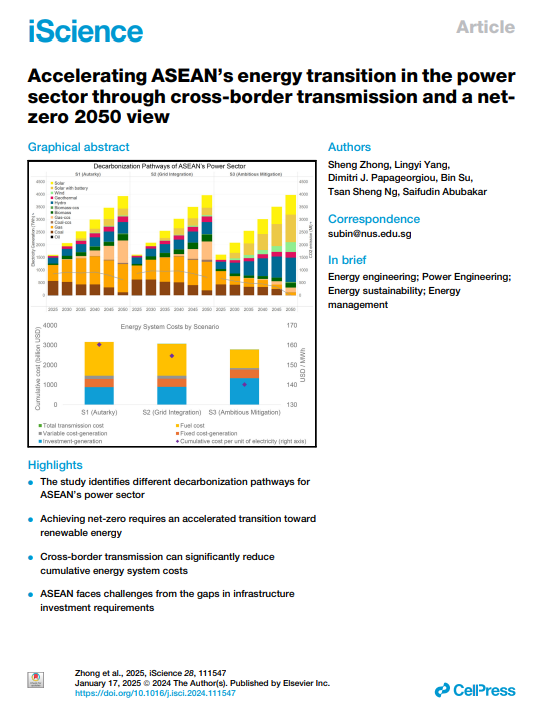
Keyword(s)
Author(s)
Sheng Zhong, Lingyi Yang, Dimitri J. Papageorgiou, Bin Su, Tsan Sheng Ng, Saifudin Abubakar
Country(ies)
Publisher
Published Date
Access
DOI
Faced with energy transition objectives, the ten countries of the Association of Southeast Asian Nations (ASEAN) have technology options to decarbonize power sector. This study investigates the hypothetical decarbonization pathways for ASEAN’s power sector. Here, we present an integrated power system capacity expansion model for ASEAN over 2018–2050. The results identify different pathways by strategically pursuing renewable energy, carbon capture and sequestration, and cross-border transmission. Transmission, while accounting for a marginal share in total cost (up to 0.5%), can reduce cumulative system costs by 11.9% and help achieve net-zero emissions. Across scenarios, generation infrastructure will require a cumulative investment equivalent to 29.6%–44.6% of ASEAN’s 2018 GDP (Gross Domestic Product). The investment requirements for the expansion plan, however, are unevenly distributed across countries, especially with the ambition to achieve a carbon-neutral power sector. Country-specific investments in decarbonization are a consideration for the region.